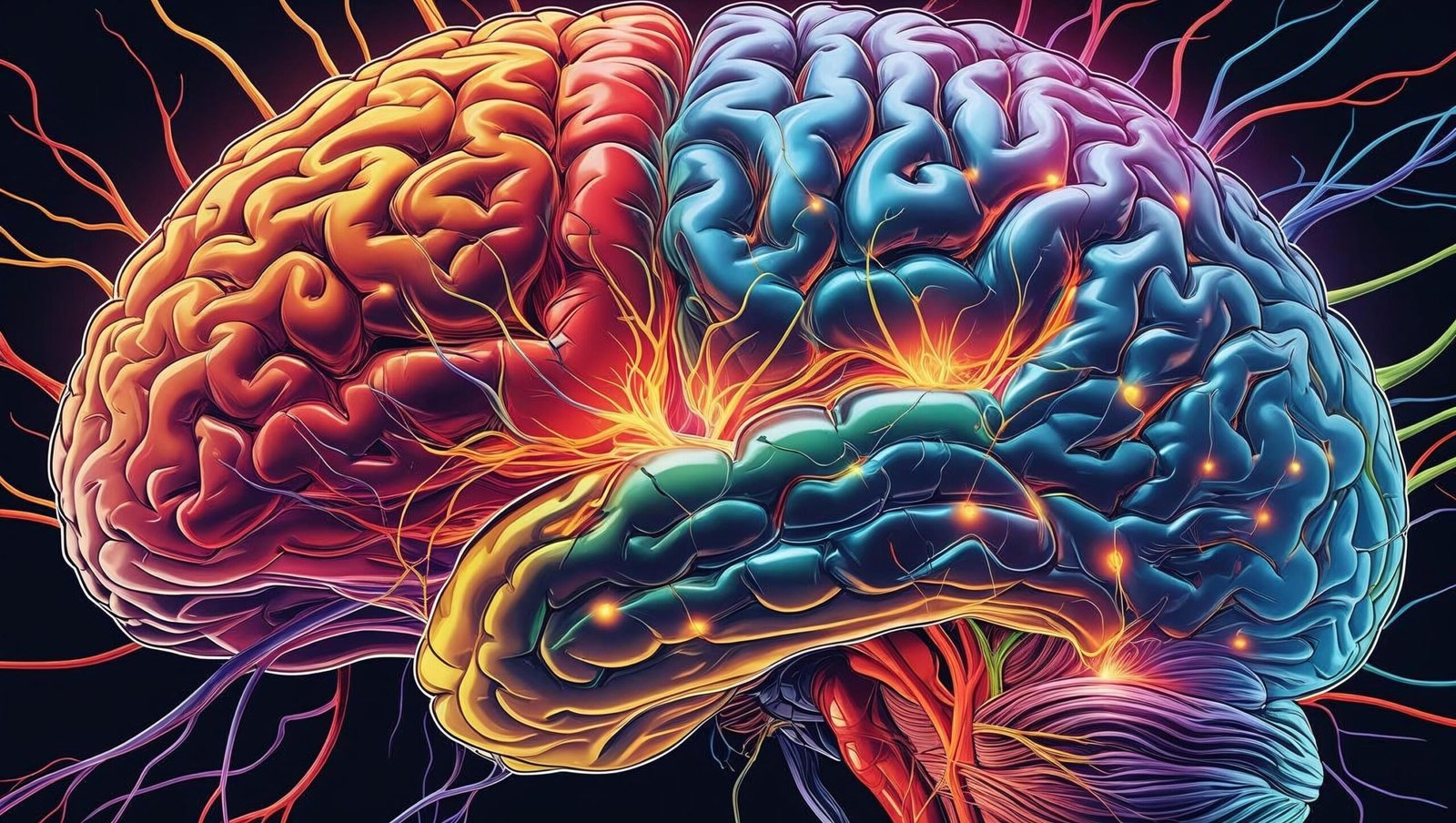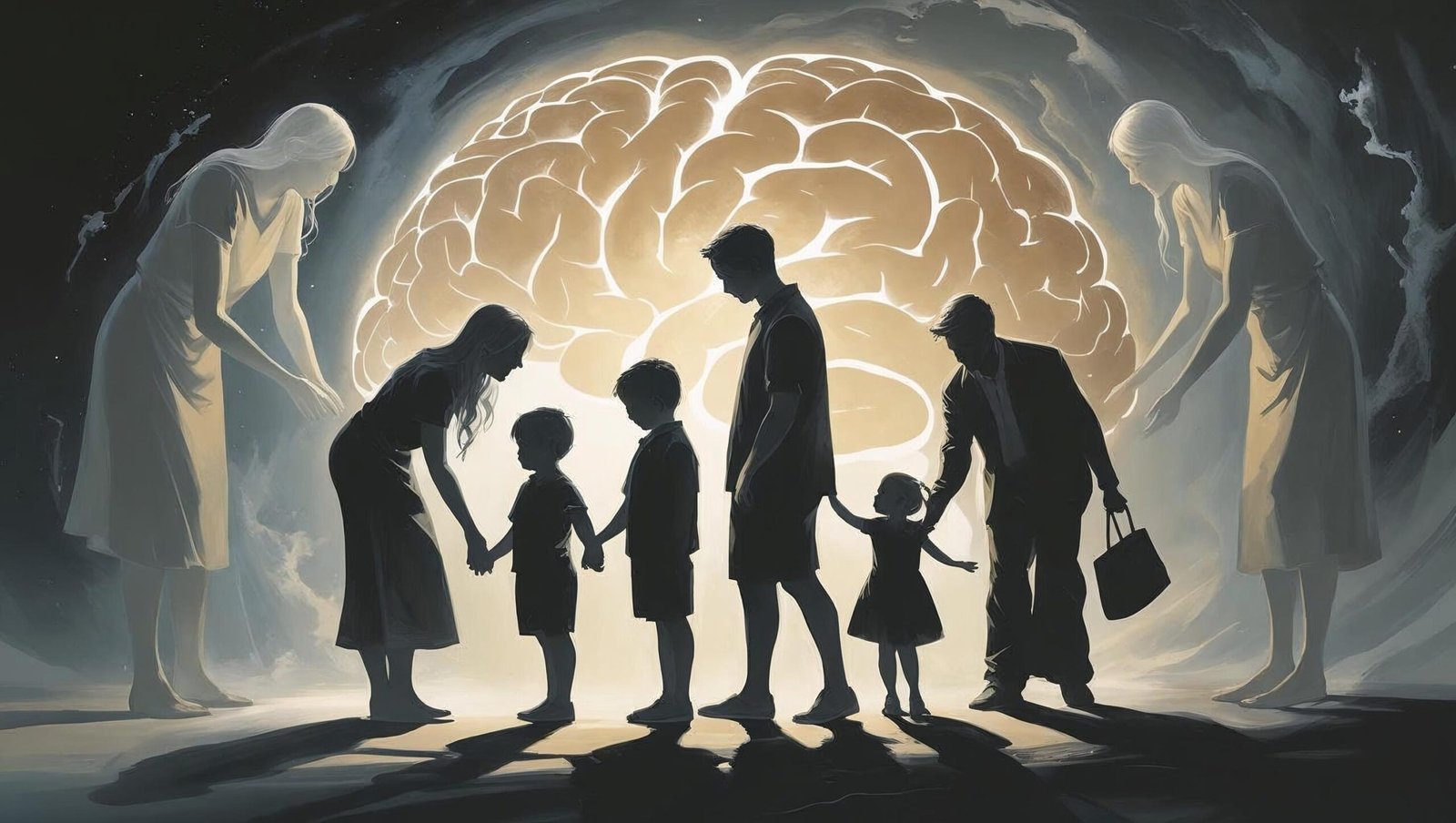Behave by Robert Sapolsky: A Comprehensive Book Review
Introduction
Behave by Robert Sapolsky is not just a book—it’s an intellectual odyssey into the roots of human behavior. Written by the world-renowned neuroscientist and primatologist, Robert Sapolsky, this 800-page tome examines why humans behave the way they do—before, during, and after an action. It is a staggering integration of biology, psychology, sociology, anthropology, and philosophy. If you ever wondered what compels us to act out of compassion or cruelty, love or hate, rationality or rage—Behave by Robert Sapolsky gives you a rich and often uncomfortable answer.
In this book review, I break down 11 powerful lessons that stood out, examine their relevance in the real world, and explore how they change the way we view human nature.

1. The Neurobiology of a Second
In Behave by Robert Sapolsky, one of the most striking points is the neural timeline of decision-making. The brain reacts in milliseconds, often before conscious awareness kicks in. For example, the amygdala fires before the prefrontal cortex has a say.
This shows that much of our behavior stems from deep, evolutionarily ancient neural circuits. The book forces you to reckon with the idea that free will is not as “free” as we think.
2. Hormones Make Us Human—And Violent
Another bold revelation in Behave by Robert Sapolsky is how hormones like testosterone and oxytocin influence aggression and bonding. Testosterone doesn’t create aggression—it amplifies pre-existing tendencies. Oxytocin, often dubbed the “love hormone,” increases in-group bonding and out-group hostility.
Thus, morality is far more tribal and conditional than we’d like to admit.
3. Childhood Isn’t Just Background Noise
In his exploration of developmental psychology, Behave by Robert Sapolsky underscores how early childhood shapes the neural scaffolding for later behavior. Trauma, neglect, or abuse in infancy can lay down pathways that perpetuate lifelong patterns of aggression or anxiety.
Reading this makes you reconsider social justice from a neuroscientific perspective.
4. The Role of Culture in Neural Wiring
Culture, language, and norms physically alter our brain structures, according to Behave by Robert Sapolsky. For instance, people raised in collectivist cultures exhibit different patterns of cortical activation than those from individualistic societies.
This lesson is transformative. It bridges anthropology and neuroscience in a way that makes culture an actual biological force.
5. Empathy Has a Dark Side
Most people equate empathy with goodness. However, Behave by Robert Sapolsky challenges this by showing how empathy can also be parochial. We often empathize selectively—with people who look, think, or live like us—while ignoring or dehumanizing others.
The book boldly asserts that rational compassion is more ethically consistent than reactive empathy.
6. The Myth of Rationality
Humans are not rational agents. Instead, Behave by Robert Sapolsky proves how emotional and unconscious biases rule the roost. Confirmation bias, framing effects, and motivated reasoning are not flaws—they’re built-in features of cognition.
This book doesn’t just explain irrationality; it shows how it evolved for survival.

7. Genetics Is Not Destiny
One of the hopeful lessons in Behave by Robert Sapolsky is that genes are not fate. Although genetic predispositions influence behavior, they are modulated by the environment. Even people with a high genetic risk for violence can live peaceful lives under the right conditions.
This opens the door for change, therapy, and social reform.
8. Us vs Them: Tribalism in the Brain
A deeply unsettling section in Behave by Robert Sapolsky shows how our brains are wired for tribalism. In-group favoritism and out-group hostility appear in toddlers, and even in lab rats.
Yet, knowing this biology enables us to override it. Knowledge becomes the first step toward moral evolution.
9. Moral Decisions Are Context-Dependent
Through chilling real-world examples—from Nazi soldiers to modern-day terrorists—Behave by Robert Sapolsky explores how ordinary people commit atrocities. Morality is disturbingly flexible and influenced by hierarchy, stress, obedience, and groupthink.
This demolishes the “bad apple” theory. Context, not character, is often the determining factor.
10. Punishment Over Rehabilitation is Biologically Flawed
The book argues that punitive justice systems are not biologically sound. Behave by Robert Sapolsky supports restorative justice models backed by neurobiology, showing that trauma and environmental instability—not inherent evil—often underlie crime.
This message is revolutionary for public policy and human rights advocacy.
11. Understanding ≠ Excusing
Some critics argue that such a deterministic view excuses wrongdoing. But Behave by Robert Sapolsky makes a nuanced case: understanding behavior is not the same as condoning it. It’s about improving outcomes—not assigning blame.
This final insight is the intellectual crescendo of the book.
🧠 Expanding the Discourse on Human Behavior
In continuing our investigation into the layered intricacies of human behavior, it becomes imperative to contextualize the knowledge imparted by Sapolsky’s magnum opus within broader interdisciplinary frameworks. While Behave by Robert Sapolsky provides a robust biological and neurological lens through which behavior can be deconstructed, its implications resonate far beyond the confines of academic discourse.
Behavior, as Sapolsky posits, is not an isolated output but a culmination—a crescendo of multiple variables harmonizing over time. Yet, beyond the neurochemical and hormonal influences, lie questions of meaning, identity, and existential alignment that demand philosophical inquiry.

🧬 Consciousness and Free Will: A Philosophical Dilemma
One of the most unsettling ramifications of the arguments presented in Behave by Robert Sapolsky is the redefinition of free will. If our decisions are sculpted by neurotransmitters, childhood trauma, and evolutionary instincts, then where does that leave volition? Do we merely operate as deterministic machines bound by our biology?
This invites a fascinating cross-section between neuroscience and philosophy. The likes of Daniel Dennett and Sam Harris have long argued over the nature of free will, and Sapolsky adds scientific gravitas to the deterministic school. However, the implication is not nihilistic resignation—it is one of radical empathy. If we are to understand that people are often the result of forces beyond their conscious control, then perhaps blame can be replaced with responsibility, and punishment with understanding.
🧪 Behavioral Economics and Social Engineering
From an applied standpoint, the book’s insights are also transformative in public policy and behavioral economics. The knowledge that our choices are not always rational, or even conscious, necessitates a re-engineering of environments in which choices are made.
Take the concept of “nudging” introduced by Richard Thaler. If policymakers accept the premise that behavior can be modulated through subtle cues, then structures like urban design, school curriculums, and workplace policies can be transformed to foster pro-social outcomes. For instance, reducing exposure to violent stimuli during childhood can recalibrate neural responses to conflict in adulthood. Such interventions are not speculative—they are empirically backed pathways toward societal betterment.
🧩 The Neuroscience of Prejudice
Perhaps one of the most socially urgent discussions in Sapolsky’s narrative is the neural architecture of prejudice. Studies show that amygdala activation intensifies when viewing out-group members, often bypassing rational scrutiny. This has profound implications for race relations, xenophobia, and ideological extremism.
Educational programs that combine social interaction with neurocognitive training could become pivotal in reducing unconscious bias. Empathy training, exposure therapy, and even virtual reality simulations are now being explored to rewire entrenched prejudices. The role of media and language in reinforcing or dissolving these biases cannot be overstated either. Sapolsky’s data doesn’t just diagnose the disease—it subtly points toward the cure.
🧘 Emotional Regulation and Cognitive Reframing
One overlooked but deeply enriching takeaway from this book is its contribution to understanding emotional regulation. If emotions like anger and fear are rooted in immediate amygdala responses, then higher-order interventions like mindfulness, meditation, and cognitive behavioral therapy (CBT) can act as counterbalancing forces.
These practices are not merely spiritual detours—they have been validated by fMRI studies showing changes in the prefrontal cortex and default mode network. The capacity to observe one’s thoughts, detach from reactive impulses, and reframe narratives can literally reshape the brain’s architecture.
Hence, Sapolsky’s thesis inadvertently becomes a defense for contemplative traditions. Practices once deemed esoteric now find a home in the corridors of neuroscience, and their societal application could be revolutionary.
🧠 Evolutionary Paradoxes in Modern Behavior
Another vital area that the book delves into—but deserves further elaboration—is the paradox of evolutionary mismatch. The human brain evolved in tribal, resource-scarce environments, yet today, it must navigate globalized, hyperstimulating, and often morally ambiguous terrains.
For example, the same neural circuitry that once ensured survival by prioritizing in-group members now fosters racism and nationalism. Our dopamine-driven reward systems—once attuned to fruit and water—are now hijacked by processed food, pornography, and digital notifications. In essence, we are Paleolithic minds living in a technocratic world.
Understanding this dissonance is crucial for designing educational systems, digital platforms, and even healthcare protocols that are in harmony with our evolutionary design rather than in opposition to it.
📚 Literature, Art, and the Expression of Behavior
While Sapolsky’s treatment is deeply scientific, the subject of human behavior cannot be severed from its artistic and cultural manifestations. Literature, theatre, film, and visual art have, for centuries, been the mirrors through which societies have examined and critiqued their own behavioral patterns.
Consider Shakespeare’s Macbeth, Dostoevsky’s Crime and Punishment, or even modern cinema like Joker. These are not just narratives; they are psychological autopsies, peeling back the veneer of civility to expose raw, often uncomfortable truths. Behave by Robert Sapolsky, while grounded in empirical data, echoes the same spirit of inquiry—albeit through the lens of science rather than allegory.
A society that reads Sapolsky and Shakespeare in tandem is one poised for both cognitive and emotional evolution.

🏥 Implications for Mental Health and Therapy
Mental health professionals would find in this book a trove of actionable insights. Disorders like PTSD, schizophrenia, or even generalized anxiety can no longer be treated as abstract pathologies but must be understood in the light of neural networks, hormonal flux, and developmental history.
Therapeutic models must evolve to integrate neuroscience into their praxis. Trauma-informed care, dialectical behavioral therapy (DBT), and neurofeedback mechanisms are already inching in this direction. Behave by Robert Sapolsky offers the intellectual framework needed to mainstream such approaches and replace outdated Freudian models with evidence-based healing.
🧑🏫 Reimagining Education Through Behavioral Science
Education systems worldwide still operate under the antiquated assumption that students are empty vessels to be filled with information. Sapolsky’s findings, however, urge a different approach: teaching must consider developmental neurobiology, emotional intelligence, and socio-cultural conditioning.
This means integrating social-emotional learning (SEL), fostering intrinsic motivation over extrinsic rewards, and customizing pedagogy to suit varied cognitive profiles. Additionally, acknowledging the impact of stress on learning and memory necessitates a shift in school environments to more compassionate, low-stress, high-nurturance models.
In this way, we do not merely teach children—we sculpt their brains, behaviors, and futures.
🌍 Global Ethics and Collective Behavior
Zooming out, one must also reckon with the global implications of Sapolsky’s research. From climate change denial to genocide, the book highlights how collective behaviors are often driven by fear, scarcity, and perceived threats to in-group identity.
This realization is both alarming and empowering. It means that with the right incentives, narratives, and environments, collective behavior can pivot toward sustainability, peace, and shared prosperity. Mass behavior is malleable—not immutable.
Thus, the principles laid out in Behave by Robert Sapolsky can serve as the ideological foundation for global cooperation and ethical governance.
🕊️ Hope in a Deterministic World
Despite its deeply deterministic overtone, the book is not devoid of hope. In fact, by laying bare the mechanisms behind behavior, it equips us with the tools to reprogram them. Knowledge becomes a gateway to freedom—not its antithesis.
The idea is not to absolve people of responsibility, but to enrich our understanding of responsibility itself. To judge less, understand more, and act with the kind of informed compassion that policy, education, and justice have long ignored.
And therein lies the moral center of Sapolsky’s work. By understanding our roots—not just cultural or historical, but biological—we begin the long, arduous, and necessary climb toward moral maturity.
Final Reflections
As readers, we owe it to ourselves and to society to absorb the lessons hidden within these pages. Whether you are a student, teacher, parent, policymaker, or simply a curious mind, Behave by Robert Sapolsky will irrevocably alter your worldview.
It may unsettle you. It may challenge everything you thought you knew about yourself and others. But it will also leave you better informed, more empathetic, and profoundly equipped to navigate the complexities of human behavior.
Author’s Style and Approach
Robert Sapolsky’s writing in Behave by Robert Sapolsky is erudite, witty, and layered with scientific precision. He anticipates reader objections and guides them through arguments like a Socratic mentor. He uses metaphors, stories, and footnotes generously.
But fair warning: this book is not light reading. It’s dense, demanding, and data-heavy. Yet, every sentence rewards attention.

Real-World Applications
Here are practical areas where the insights from Behave by Robert Sapolsky can make a difference:
-
Education: Recognizing the impact of childhood trauma on learning.
-
Criminal Justice: Advocating for rehabilitation over punishment.
-
Healthcare: Understanding behavioral roots of lifestyle diseases.
-
Politics: Reducing polarization through empathy training.
-
Parenting: Creating nurturing environments with long-term neural benefits.
Who Should Read This?
Behave by Robert Sapolsky is ideal for:
-
Psychology and neuroscience students
-
Educators and social workers
-
Lawmakers and activists
-
Anyone curious about what makes humans tick
FAQs
❓ Is Behave by Robert Sapolsky suitable for general readers?
Not quite. It’s intellectually rigorous and best suited for readers with some background or interest in science, psychology, or sociology.
❓ How long is Behave by Robert Sapolsky?
Around 800 pages. But it’s worth every page if you’re committed.
❓ Is it politically biased?
Sapolsky remains committed to scientific evidence. While his conclusions may align with progressive values, he presents data from across the spectrum.
❓ Does this book support determinism?
Yes, Behave by Robert Sapolsky leans heavily toward biological and contextual determinism but doesn’t remove moral responsibility.
❓ Is it available in audiobook form?
Yes. The audiobook version is narrated by Michael Goldstrom and is highly recommended for auditory learners.
Conclusion
In a world rife with superficial self-help books and reductionist psychology, Behave by Robert Sapolsky stands out as a monumental achievement. It’s uncomfortable, thought-provoking, and deeply transformative. More than just explaining behavior, it demands introspection—and action.
If you’re ready to confront the complexity of human nature and break free from simplistic narratives, Behave by Robert Sapolsky is your essential guide. It’s not just a book—it’s a mirror held up to society, biology, and the self.
Read it. Reflect on it. Recommend it.
🔵 For more in-depth book reviews, visit shubhanshuinsights.com
Feel free to share your thoughts below 👇
💬 Powerful Comments Section (Suggestions):
-
“This is by far the most insightful breakdown of Behave by Robert Sapolsky I’ve come across. Brilliantly articulated!”
-
“I finally understand how behavior is shaped on a biological level. Thanks for this thought-provoking review!”
-
“Sapolsky’s book changed how I view justice and empathy. Your review captures that essence perfectly!”
-
“Reading this helped me reflect on my own biases and triggers. Thank you for this enlightening post.”
-
“Such a comprehensive review. Adding Behave by Robert Sapolsky to my reading list now!”